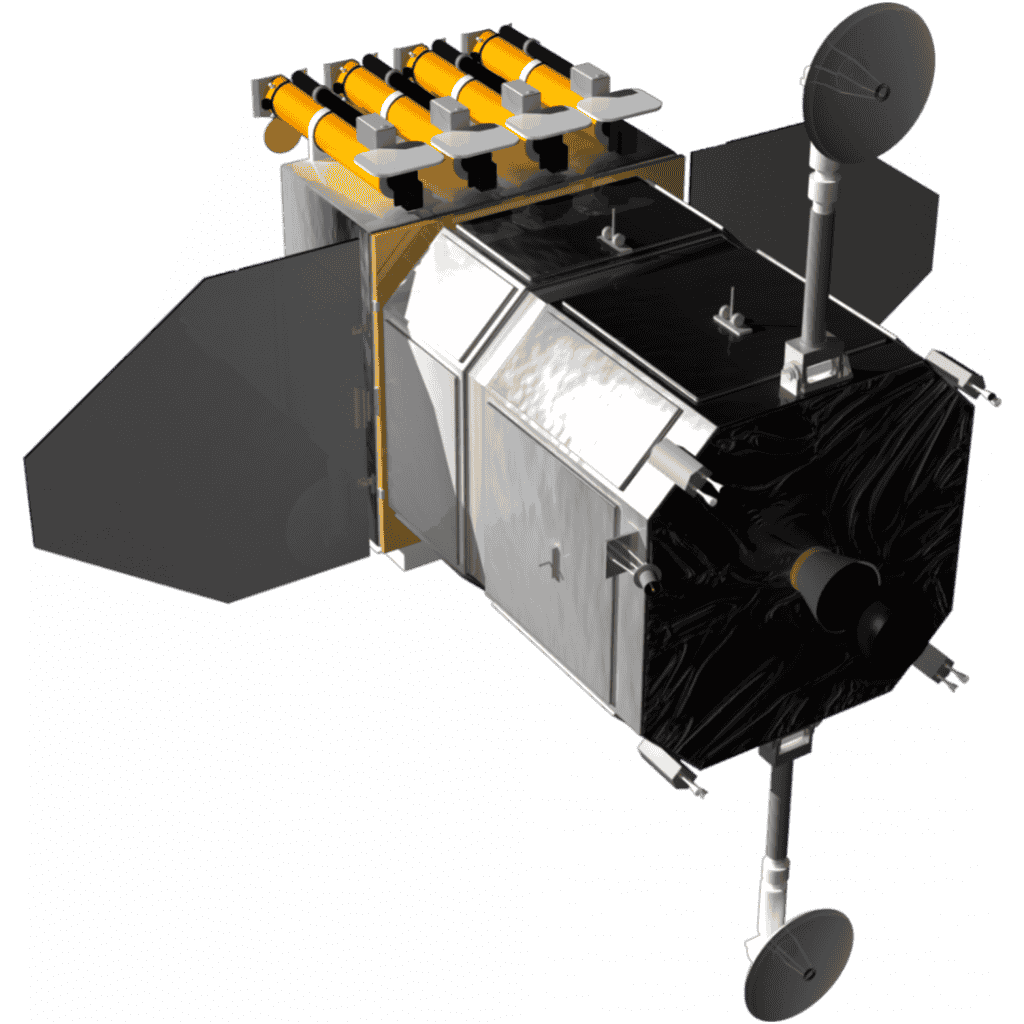Solar Dynamics Observatory
Sun Watcher
Telescope studying solar activity and space weather

USPs
- Continuous monitoring of solar flares and coronal mass ejections
- High-resolution imaging for space weather forecasting
- Studies solar impacts on Earth’s climate and technology
- Captures a new image of the Sun every 0.75 seconds
- Provides real-time data for satellite and power grid protection
- Supports global space weather research and forecasting
Major Milestones
- 2010-02-11: Launched aboard an Atlas V rocket from Cape Canaveral, initiating its mission to study the Sun's dynamics and space weather.
- 2010-04-27: Entered its geosynchronous orbit at 28,000 km above Earth, beginning continuous high-resolution observation of the Sun.
- 2010-05-07: Released its first high-definition images from the Atmospheric Imaging Assembly (AIA), showcasing solar activity in multiple wavelengths.
- 2011-03-07: Captured detailed images and data of a massive X-class solar flare, providing insights into solar eruptive events.
- 2012-07-12: Observed the transit of Venus, offering a rare opportunity to study solar limb effects and atmospheric properties.
- 2014-10: Completed its primary mission, having collected over 100 million images and established a baseline for solar cycle studies.
- 2017-09-06: Recorded an X9.3-class solar flare, the strongest of Solar Cycle 24, enhancing understanding of coronal mass ejections.
- 2020-12: Began its extended mission phase, focusing on Solar Cycle 25 with improved data on solar flares and sunspots.
- 2023-07: Released a comprehensive dataset on the solar maximum of Cycle 25, aiding predictions of space weather impacts.
- 2025-07-17: Celebrates over 15 years of operation, continuing to provide real-time solar data and support space weather forecasting.
Cosmic Portrait
Solar Dynamics Observatory: Tracking Our Star
Solar Dynamics Observatory (SDO), launched by NASA in February 2010, is a flagship mission dedicated to monitoring the Sun’s behavior in unprecedented detail. Operating from a geosynchronous orbit, SDO delivers a continuous stream of high-resolution images and solar data, revolutionizing our understanding of how the Sun influences Earth and the surrounding solar system.
- Purpose and Mission: SDO’s primary goal is to understand the dynamic processes that generate solar activity, including solar flares, coronal mass ejections (CMEs), and variations in solar irradiance. These phenomena directly affect Earth's space weather, impacting satellite operations, GPS navigation, communication systems, and even power grid stability. By studying the Sun’s magnetic field and atmosphere, SDO helps forecast space weather events more accurately.
- Observational Capabilities: Equipped with three advanced instruments—AIA (Atmospheric Imaging Assembly), HMI (Helioseismic and Magnetic Imager), and EVE (Extreme Ultraviolet Variability Experiment)—SDO captures the Sun in over ten different wavelengths simultaneously, including ultraviolet, extreme ultraviolet (EUV), and visible light. These instruments work together to map solar activity, track magnetic field changes, and detect variations in solar energy output with high temporal and spatial resolution.
- Orbit and Coverage: SDO’s geosynchronous orbit allows it to hover above a fixed point over Earth, continuously observing the Sun 24/7 without the interruptions faced by lower-orbit satellites. This orbit ensures that scientists receive real-time data crucial for studying transient solar events like flares and CMEs as they happen.
- Scientific Breakthroughs: Since its launch, SDO has played a pivotal role in transforming heliophysics. It has revealed the intricate dance of plasma loops on the solar surface, mapped sunspots and active regions with unmatched detail, and tracked the evolution of magnetic fields responsible for explosive solar events. These discoveries have deepened our knowledge of the Sun’s internal dynamics and its effects on the heliosphere.
Legacy and Ongoing Impact
In 2025, the Solar Dynamics Observatory remains a cornerstone of solar science. It provides the foundation for real-time space weather prediction tools used by NASA, NOAA, and international space agencies. These forecasts are critical for protecting astronauts, spacecraft, aviation routes, and ground-based infrastructure from solar radiation and geomagnetic storms.
SDO’s data is freely available and widely used in both research and education. It supports a global network of scientists studying solar cycles, magnetic field dynamics, and the Sun’s influence on Earth's upper atmosphere. In classrooms, its stunning images of solar eruptions and loops ignite curiosity and inspire the next generation of space scientists.
As newer solar missions like the Parker Solar Probe and ESA-NASA Solar Orbiter venture closer to the Sun, SDO continues to provide the vital global context needed to interpret localized measurements. Together, they create a multi-mission synergy that is redefining solar and space weather science.
SDO is our eye on the Sun, safeguarding technology with every flare it observes.
More than a decade after its launch, the Solar Dynamics Observatory remains a beacon of scientific excellence—watching, recording, and decoding the fiery dynamics of our closest star. It stands as an essential asset not only for solar physicists but also for ensuring the resilience of modern technological infrastructure in the face of solar threats.
Fun Fact
SDO captures a new image of the Sun every 0.75 seconds!